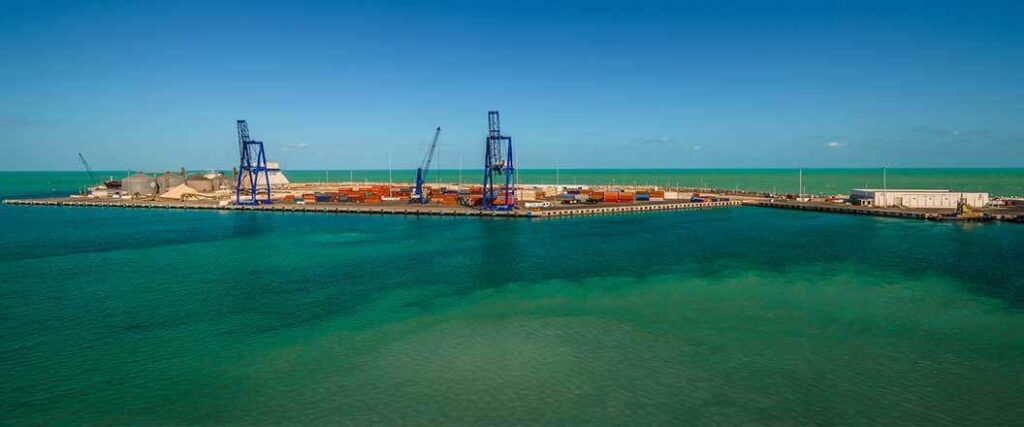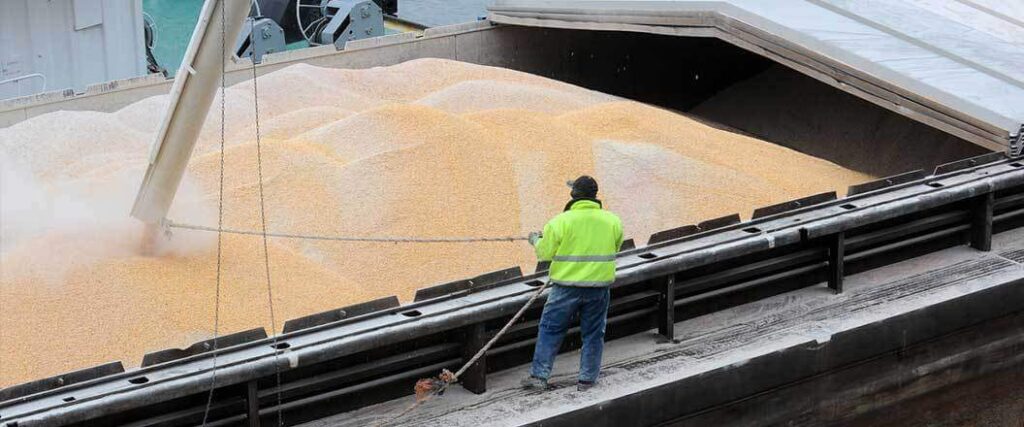When considering exporting goods to another country, even one as close to the United States as Mexico, you should always be equipped with the latest and best information. This article outlines trade policies, popular exports, and what is required when exporting to Mexico.
The United States-Mexico-Canada Agreement (USMCA) allows for tariff-free trade when exporting to Mexico. However, exports to Mexico can be complicated due to the requirement of a local Customs broker to clear Mexican Customs and act as the Importer of Record (IOR).
Exporting to Mexico is not without its share of challenges. The article below will help give insight into this evolving economy and how to break through.

An agreement between President Trump and Mexican President Sheinbaum has resulted in another month-long tariff break, for a limited number of products. Until April 2, imports from Mexico that are specifically granted duty-free entry under the USMCA treaty.
As of now, this deal is limited to trade between the U.S. and Mexico.
Historically, Mexico’s top exports to the United States have included automobiles, textiles, and produce.
On February 1, 2025, President Trump imposed tariffs on goods from Mexico, Canada, and China. The tariffs fall in line with his America First Trade Policy and will remain in effect indefinitely, or until removed by the president.
This means all products imported from Mexico to the United States 25% additional ad valorem duty with no exceptions
No specific HTS code list accompanied the orders, so importers should expect that the import of any product intended for consumption in the U.S. will be subject to the additional tariff.
A last-minute agreement between Mexican President Sheinbaum and U.S. President Trump has paused the imposition of these tariffs for one month as of February, 3, 2025.
In addition to the ad valorem tariffs being applied to imports from each of the three nations, there are other provisions written into each order to provide clarity on specific exceptional situations.
All orders were pushed through as part of a national emergency under the International Emergency Economic Powers Act (IEEPA) and the National Emergencies Act.
As mentioned in the March 4 update, President Gloria Sheinbaum of Mexico will announce her country's retaliatory tariff actions in a public address on Sunday, March 9.
The United States and Mexico have enjoyed a strong trade partnership over the past few decades. The import and export market ranks number three in the U.S., according to the United States Census Bureau (USCB).
The Mexican economy is one of the top twenty largest economies on earth. Unfortunately, the economy has been lacking in overall growth over the past thirty years. In recent years though, the Mexican economy has grown exponentially.
Trade with Mexico statistics:
| Year | Imports | Exports |
| 2021 | $384.6 Billion | $276.5 Billion |
| 2020 | $323.5 Billion | $211.4 Billion |
| 2019 | $356.1 Billion | $256.7 Billion |
| 2018 | $343.7 Billion | $266.1 Billion |
| 2017 | $312.7 Billion | $243.6 Billion |
The trade profitability between the U.S. and Mexico is incredibly strong. However, the data illustrates an annual trade imbalance in favor of imported goods from Mexico over exported goods to Mexico.
The fact that over 200 billion in trade exports occur yearly is a very healthy sign of good trade relations. Also, the added benefit of the U.S. holding an over 50% stake in all of Mexico’s imported goods is massive for U.S. exporters and those looking to break into the market.

The partnership between the U.S. and Mexico is thanks to the United States-Mexico-Canada Agreement (USMCA), which replaced the North American Free Trade Agreement (NAFTA), which was in place from 1994 to 2020.
It is essential to understand that NAFTA is no longer in place and that USMCA has replaced that trade agreement due to the need for updates and fine-tuning of our trade partnership. While many enjoyed NAFTA, there was a definitive call for change and updates.
The United States of America, Mexico, and Canada Agreement (USMCA) encourages competitiveness, lowers barriers of entry framework, and fast-moving exchanges of products. The reasoning for this initiative was to bring the trade agreement into the modern era.
Altering and renegotiating NAFTA was a tremendous task for all parties involved. The first step was achieved when the Mexican Senate passed the proposal in 2019. This initiative opened the door to a more refined trade system benefiting all parties.
The importance of fair and equitable trade between the U.S., Canada, and Mexico is critical for all three nations. As an exporter of goods, these changes are vital to the success of your trade into Central America.
Under the provisions of the USMCA, there are essentially no tariffs associated with American goods being exported to Mexico at this time. Of course, things can change, and stipulations may come to call, but they are now virtually non-existent.
If you’re exporting to Mexico or Canada, our article on the benefits of USMCA will help you out.

There are many popular exports that pass through the southern border of the U.S. every year. Several categories of goods, such as mineral, agricultural, and machine-based products, are among the most popular.
According to the Observatory of Economic Complexity (OEC), The U.S. exports nearly 20 billion dollars worth of goods and services to Mexico each month. An incredible array of products stream across the US-Mexican border and shows no signs of slowing.
| Commodity | Export Value | Market Percentage |
| Petroleum Gas | $3.4 Billion | 16.1% |
| Petroleum Oil | $1.58 Billion | 7.51% |
| Motor Vehicle Parts | $1.08 Billion | 5.14% |
| Other Commodities | $837 Million | 3.98% |
| Agricultural | $823.9 Million | 3.73% |
| Electronic Circuits | $683 Million | 3.24% |
Below is a list of some of the most heavily traded agricultural exports to Mexico from the U.S. These meats, fruits, and vegetables comprise Mexico's most frequently traded agricultural commodities that pass through customs clearance each month.
While not as big as petroleum or the auto industry, Soybeans' Agricultural exports to Mexico are perhaps the most wide-reaching industry currently in place.
In 2021, agricultural exports into Mexico reached an all-time high of over $25 billion in sales, marking an annual increase of over 39% in terms of U.S. agricultural export trade to Mexico. This number has firmly cemented the U.S. as Mexico's top exporter of agricultural products.

When exporting to Mexico, things are required and necessary to have in place both before and during the export process. Knowing what support systems are available, who to facilitate your exports, and the documentation required is essential.
First, let us look at the various agencies available here at home. The U.S. government has support agencies in place for you to take advantage of that are an excellent source for information and support.
The following are excellent resources for exporting:
Critical documents are required for presentation to the Mexican Customs Authority (Pedimento) to be successfully imported into Mexico:
Unfortunately, U.S. customs brokers cannot facilitate goods into Mexico. However, a Mexican customs broker can clear goods through Mexican customs. Responsibility rests with the Mexican broker once the goods arrive at the border.
Your trade partner in Mexico is the legal entity responsible for facilitating a broker while taking an active part in the importation process.
An Importer of record (IOR) that is not Mexican remains unrecognized by Mexican authorities. The IOR must be a local person or business that can be entirely accountable for issues related to not paying taxes or adherence to compliance-related issues.

Mexico is a prominent member of the World Trade Organization (WTO), G20, and Asia-Pacific Economic Cooperation (APEC). They have a growing gross domestic product (GDP), and a growing percentage of their workforce is entering the middle class.
What does all this information mean to an exporter? It means that Mexico is not only a respected member of the global economic community, but they are a ripe marketplace for U.S. exports.
Trade policies in Mexico are standard fare for the most part. However, the single most significant hurdle is the requirement for a Mexican Customs broker to facilitate your goods and act as the IOR.
These brokers and the buyers are responsible for finding an adequate Mexican carrier to move the goods to their facility. Mexico’s trade strategy of an open market with consolidated strategies and policies has brought them to the forefront of trade in the eyes of their neighbor to the north.
Exporting to Mexico is not as easy as you might think. There still are challenges when dealing with trading partners like Mexico. Hurdles in culture, customs, agencies, and language create potential problems for U.S. exporters.
However, no challenge is impossible to overcome. Through the assistance of Cargo Export USA, we can get your goods moving with speed, care, and precision. Consider using the following services:
As a customer, you can enjoy the latest in technology, the brightest minds in the exporting business, and a genuine desire to serve you in any way possible. Our team is ready to serve at any time or any place.
You can call us at (866) 301-0635 or click here for more information on how we can help you export to Mexico.